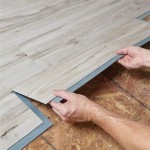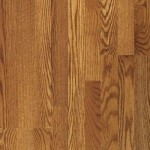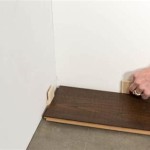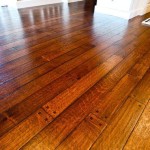Blue Stain Pine Flooring: A Comprehensive Guide
Blue stain pine flooring has emerged as a popular choice for homeowners and builders seeking a unique aesthetic and an environmentally conscious building material. Characterized by distinctive blue or gray streaks running through the wood grain, this type of flooring offers a rustic charm that sets it apart from more conventional options. The blue staining is not a defect but rather a natural occurrence resulting from a symbiotic relationship between the pine tree and a specific type of fungus. This article provides a detailed exploration of blue stain pine flooring, covering its origin, characteristics, benefits, installation considerations, and maintenance requirements.
The Origin and Formation of Blue Stain
Blue stain in pine wood is caused primarily by a group of fungi within the *Grosmannia* and *Ophiostoma* genera. These fungi are typically introduced to the tree by bark beetles. These beetles bore into the pine tree's phloem layer, creating galleries where they lay their eggs. As they tunnel through the wood, they carry fungal spores that germinate and spread throughout the sapwood. The fungus does not decay the wood in the same way that rot fungi do; instead, it simply alters the color of the wood cells. The blue or gray coloration comes from the melanin produced by the fungus as a protective mechanism. The staining patterns vary widely depending on the species of fungus involved, the duration of the infection, and the tree's individual characteristics.
The prevalence of blue stain is more common in certain geographical regions and under specific environmental conditions. Areas with large pine forests susceptible to bark beetle infestations tend to produce more blue stain lumber. Warmer temperatures and drier conditions often exacerbate bark beetle activity, leading to increased fungal inoculation. Ironically, the very factors that can weaken a tree and make it susceptible to beetle attacks and subsequent blue stain infection, contribute to the creation of a unique and highly sought-after aesthetic in the finished lumber.
It's important to understand that blue stain does not compromise the structural integrity of the wood to a significant extent. While it might slightly reduce the bending strength in severe cases, the reduction is generally minimal and does not render the wood unsuitable for flooring applications. The fungus primarily affects the appearance, leaving the core strength and durability properties of the pine largely intact. However, flooring manufacturers often kiln-dry the lumber to kill the fungus and prevent further spread or any potential degradation.
Key Characteristics and Aesthetic Appeal
The most distinguishing characteristic of blue stain pine flooring is, of course, its unique coloration. The blue or gray streaks create visually appealing patterns that can range from subtle hints of color to dramatic and pronounced contrasts. This variation makes each plank of flooring unique, contributing to a one-of-a-kind aesthetic for any space. The patterns can be described as "spalted" although true spalting involves decay, and the fungal action in blue stain is not decay-inducing.
Beyond the blue staining, pine wood itself offers inherent characteristics that make it a desirable flooring option. Pine is a relatively soft wood, which contributes to its comfortable feel underfoot. However, this softness also means that it is more susceptible to dents and scratches compared to hardwoods like oak or maple. Many homeowners appreciate the authentic, lived-in look that develops over time as the flooring acquires minor imperfections. Others may choose to apply multiple coats of a durable finish to provide increased protection against wear and tear.
Pine typically features a prominent grain pattern, adding to its rustic charm. The knots and other natural imperfections give each plank character and visual interest. The wood's inherent warmth also plays a role in its aesthetic appeal. Pine flooring can create a cozy and inviting atmosphere, particularly when paired with complementary design elements like natural light, warm color palettes, and textured fabrics. The blue stain itself enhances these characteristics, creating a rustic but uniquely patterned look not found in many other flooring options.
The color of the surrounding wood in blue stain pine can vary from light yellow to a more amber hue depending on the age of the tree, the species, and the drying process. The contrast between the light wood and the blue staining further accentuates the unique patterning, making it a striking feature in any room. This combination of color, grain pattern, and natural imperfections makes blue stain pine flooring a visually captivating choice that can enhance the overall aesthetic of a home.
Benefits of Choosing Blue Stain Pine Flooring
Beyond its unique aesthetic, blue stain pine flooring offers a range of practical and environmental benefits. One significant advantage is its affordability. Pine is typically less expensive than hardwoods like oak or maple, making it an attractive option for budget-conscious homeowners. The fact that the blue stain is a natural occurrence, rather than an added treatment, further contributes to its cost-effectiveness.
Another key benefit is sustainability. Pine trees grow relatively quickly and are readily available in many regions. This makes pine a renewable resource and a more environmentally friendly choice compared to slow-growing hardwoods. Using blue stain lumber, which would otherwise be considered a less desirable product, also promotes responsible forest management by utilizing a broader range of available resources.
Pine's natural properties also contribute to its comfort and ease of maintenance. Its softness provides a pleasant feel underfoot, which is particularly appreciated in areas where people spend a lot of time standing. Additionally, pine flooring is relatively easy to clean and maintain. Regular sweeping or vacuuming, along with occasional damp mopping, is typically sufficient to keep it looking its best. Choosing the right finish can also significantly improve the ease of maintenance and resistance to wear and tear.
Blue stain pine flooring can also be easily customized to suit different design preferences. It can be stained in a variety of colors to complement existing décor, or left natural to showcase its unique character. Different finishes can also be applied to achieve different levels of sheen and protection. The versatility of blue stain pine flooring makes it a suitable choice for a wide range of interior styles, from rustic and traditional to contemporary and modern.
Installation Considerations and Best Practices
Installing blue stain pine flooring is generally similar to installing other types of wood flooring, but there are a few specific considerations to keep in mind. Proper subfloor preparation is crucial for ensuring a stable and long-lasting installation. The subfloor should be clean, level, and dry. Any imperfections or irregularities should be addressed before laying the flooring. Using a moisture meter to assess the moisture content of both the subfloor and the pine flooring is highly recommended to prevent warping or cupping after installation.
Acclimation is another important step. The pine flooring should be allowed to acclimate to the room's temperature and humidity for several days before installation. This allows the wood to adjust to its new environment and minimizes the risk of expansion or contraction after it is installed. Stacking the planks with spacers in between allows for proper air circulation during the acclimation process.
The installation method will depend on the type of flooring and the subfloor. Solid pine flooring can be nailed or glued down to a wood subfloor. Engineered pine flooring, which consists of a thin layer of pine veneer over a plywood or fiberboard core, can be installed as a floating floor using a click-lock system. Each method has its own advantages and disadvantages, and the best choice will depend on the specific circumstances.
When nailing or screwing down solid pine flooring, it's crucial to use the correct type and size of fastener. Blind nailing or screwing through the tongue of the plank will conceal the fasteners and create a cleaner look. Using a nail gun with adjustable pressure settings can help prevent damage to the soft pine wood. When gluing down the flooring, it's important to use a high-quality adhesive specifically designed for wood flooring.
Spacing is another important consideration. Leaving a small expansion gap around the perimeter of the room will allow the flooring to expand and contract without causing damage. The size of the expansion gap will depend on the width of the room and the moisture content of the wood. Covering the expansion gap with baseboards or quarter-round molding will conceal it and provide a finished look.
Maintaining and Protecting Blue Stain Pine Flooring
Proper maintenance is essential for preserving the beauty and longevity of blue stain pine flooring. Regular cleaning is the first line of defense against dirt and scratches. Sweeping, vacuuming, or using a dust mop will remove loose debris before it can accumulate and cause damage. Avoid using abrasive cleaners or scouring pads, as these can scratch the finish.
Damp mopping is generally safe for pine flooring, but it's important to use a minimal amount of water. Excess water can seep into the wood and cause warping or staining. Using a microfiber mop and a pH-neutral cleaner is recommended. Wringing out the mop thoroughly before applying it to the floor will help prevent excess moisture.
Applying a protective finish is crucial for resisting scratches, scuffs, and water damage. Polyurethane finishes are a popular choice for pine flooring because they provide a durable and water-resistant surface. Oil-based polyurethane finishes tend to be more durable but can yellow over time. Water-based polyurethane finishes are less durable but are clearer and do not yellow. Applying multiple coats of finish will provide increased protection.
Using area rugs in high-traffic areas can help protect the flooring from wear and tear. Placing rugs at entrances and exits will trap dirt and debris before it can be tracked onto the flooring. Furniture pads can also prevent scratches and dents from furniture legs. Avoiding wearing shoes with high heels or sharp objects on the flooring will also help prevent damage. Regularly inspecting and repairing any damaged areas will prevent minor issues from escalating into more significant problems. By following these maintenance tips, homeowners can keep their blue stain pine flooring looking beautiful for years to come.

Beetle Kill Pine Flooring For Blue Stain

Blue Stain Pine

Beetle Kill Blue Pine T G Flooring Sustainable Lumber Company Farm House Makeover Wood Floors Wide Plank

Blue Stain Pine Floor Wide Plank Flooring On

Beetle Kill Blue Stain Pine T G Ceiling Wall Planks

Beetle Kill Blue Pine T G Flooring Sustainable Lumber Company

This Is A Blue Stain Pine Flooring The Greys And Blues Are Part Of Wood Before Any Applied Gives You Very Unique Look White

What Is Blue Stain Pine Reliance Timber

Beetle Kill Blue Stain Pine T G Ceiling Wall Planks

Blue Stain Pine Lumber 72 X 5 8 1 Frison Logue Hardwoods
Related Posts








